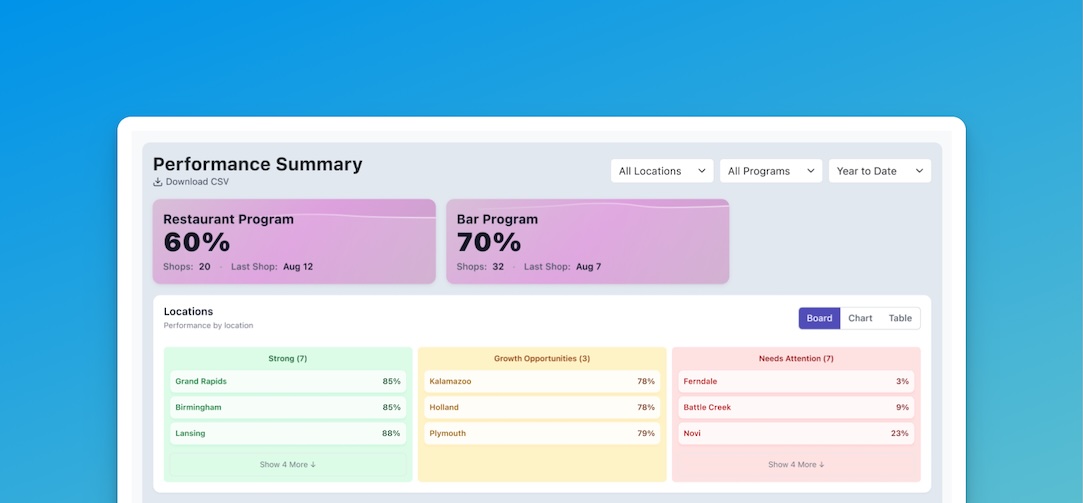
Having a rock-solid customer experience strategy can aid your business when an economic downturn is on the horizon. A recession can impact your business in many ways. From strained revenue to tense operations the overall uncertainty can be stressful.
That said there are various key strategies to remember when navigating a possible economic challenge. By being proactive you can stay competitive ensure revenue and emerge with a solid business foundation—even when times become difficult.
Adapt to Shifting Customer Needs
When your business landscape changes you’ll need to understand your customers on a deeper level. Certainly the ability to shift quickly will help keep your business competitive and even market to new customers.
Research the Current Market
Design a customer experience strategy with research in mind. By including this in your plan on a regular schedule you’ll have a leg up on your competitors. Undoubtedly this will give you the experience to understand the changes you see and adapt quickly.
If you frequently monitor the data you’ll understand how to handle customer and supplier changes. Further this will allow you to make your orders so you’re not as affected by supply disruptions. Overall making research part of your customer experience strategy will help your business adapt during economic challenges.
Zero In on Your Customer Segments
By researching your industry and getting to know your customers you’ll be better able to adapt to their shifting needs. Your customer segments are all affected differently during economic downturns. Once you understand who your customers are you’ll be able to support them better no matter who they are:
- Families with children
- Students and young adults
- Retirees and older adults
- Small business owners
- B2B customers
Generally this knowledge will help your business overall especially when creating a customer experience strategy for an economic decline.
Build Lasting Relationships
While researching your customer base is incredibly important building long-term relationships is one of the best ways to increase your return on investment (ROI). Customer turnover is expensive and this often means shifting funds to a marketing campaign. By understanding who your customers are and keeping up with their needs you can build a solid customer base that will continue to give you business in uncertain times.
That being said new customers will see how much you care which makes your business enticing—effectively driving new customers your way. As your business grows and you build new relationships so will your marketing opportunities. To sum it up building long-term relationships can entice new customers and help boost your business.
Communication-Enhanced Customer Experience Strategy
As noted before economic downturns can cause a lot of uncertainty. Hence openly communicating with your customers will enhance trust and confidence in your business. Here are some opportunities to communicate effectively.
Policy Changes
During an economic slowdown you may need to adjust your policies. Whether the changes are for product returns customer service handling or something else honesty is vital. Everyone processes change differently especially when dealing with a business with which they are already familiar.
For example here are some steps you can add to your customer experience strategy:
- Don’t wait. Begin communication as soon as you recognize the need.
- Be honest. Explain the changes openly and straightforwardly.
- Provide clarity. Help your customers understand why the changes are necessary.
- Utilize all channels. Cover your bases and communicate across all platforms to ensure your customer base is aware of upcoming updates.
Effective Communication
We understand the importance of communication but how do we ensure communication is effective? It all starts with knowing your brand voice and your customers—both current and potential. Communication builds trust improves satisfaction and encourages long-term loyalty.
Successful communication begins with a few key points:
- Communicate personally with engaging relevant and empathetic updates.
- Use simple and concise language and avoid excessive jargon to remain inclusive to new customers.
- Be consistent in communicating with regular updates and a brand voice that matches across all channels.
- Provide value and engage with customers to further aid in building long-term relationships.
- Measure success by tracking the effectiveness of your communications. You can A/B test your emails track web and in-person traffic and monitor ad performance.
Above all by honing your communication style and frequency you can ensure that you reach your target audience effectively. Communication is a valuable tool in improving your customer experience strategy.
Deliver Exceptional Value
Finding a way to provide value during economic slowdowns is another option to shore up your customer experience strategy. During uncertain times customers seek comfortable and accessible ways to do business. In this way you can encourage loyalty and stay competitive while increasing revenue.
Focus on High Quality
During economic shortages one of the first things people (and business owners) do is find out where to cut costs. The concern here is that sometimes to reduce spending businesses may cut corners where they shouldn’t. Generally this means that specific processes are eliminated usually by ignoring safety concerns or offering lower-quality parts. Ensure the longevity of your business—and customer retention—by providing good products no matter what.
Similarly provide equally high-quality services across all channels. Your customers will likely expect similar products and processes whether they are shopping online or in store. In summation providing superior services or products should be a top goal in your customer experience strategy.
Define Your Value
Staying competitive is often a critical factor in the business landscape. Expressing your value to your current or potential customers can make your offerings especially enticing. For example if you’ve discovered a way to offer products at a reduced cost without cutting corners make that known through your marketing—or if you have innovative features that other competitors don’t. By sharing your value proposition you can improve your customer experience strategy.
Ultimately defining your value and staying competitive can increase business success in an economic downturn. Your customers can trust that you’ll continue to offer superior products and services. In doing so they will trust your business in the long run effectively improving your bottom line.
Be Flexible
An additional customer experience strategy is to adapt and offer flexible options to your customers. For example offering temporary payment holds split payments or other plans can be beneficial during tough times. Additionally you can offer discounts or rewards for your budget-conscious customers.
To sum up offering flexible options increases customer loyalty and retention. This customer experience strategy can help maintain your customer flow.
Support Your Customer Experience Strategy
Your support staff are the heart and soul of your business. If they are taken care of they’re more motivated to care for your customers. By effectively supporting your team members you improve the retention of both customers and employees.
Strengthen Support Channels
The uncertain nature of a recession can be stressful for everyone. It’s essential for your customer support channels online or in person to be in tip-top shape. The ability to provide for your customers especially in their time of need can also aid retention. Shore up your support to strengthen your customer experience strategy in a few ways:
- Offer multiple paths to receive customer support.
- Encourage your staff to be quick but thorough in their responses.
- Utilize AI or FAQ pages to automate frequently asked questions with clear answers.
- Train your staff with empathy and knowledge for effective communication.
- Continuously improve your support needs with training and refined processes.
Equip and Encourage Your Staff
A well-supported employee is a motivated one. Keeping your staff trained especially with relevant knowledge during a recession will be beneficial in the long run. Cross-training opportunities empathy and communication skills and other career abilities will help improve staff overall.
A formatted training program gives employees the tools needed to perform their jobs at the necessary intensity. A team that can pivot during hard times can help your business thrive and increase customer satisfaction (and retention).
Design a Customer Experience Strategy Using Effective Feedback
It’s vital to be open to communication between your customers and staff—positive and negative. Creating a customer experience strategy that harnesses open feedback can strengthen your business. By analyzing insights from gained feedback you can design actionable steps to refine or improve your business practices. Here are a few ways to get started:
- Actively seek feedback from reviews or customer surveys.
- Be receptive to new insights.
- Have an “open door” policy with your employees.
- Show appreciation to staff and customers with feedback incentives.
- Take action on feedback and follow up regarding improvements or implementation.
Above all a strong customer experience strategy should include steps that use feedback to boost your business.
Monitor the Economic Situation and Adapt
During a difficult economic situation avoid being purely reactive to the changes. Instead monitor the problems so you can effectively plan ahead. This action will benefit you as things change giving you the edge to stay afloat and competitive.
Plan a Pivot in Your Customer Experience Strategy
As you begin maneuvering your business through an economic downturn you may need to adjust your business strategy to meet customer needs. An intelligent customer experience strategy includes creating a plan that can be enacted if a recession threatens your typical business operations. You might consider ways to adapt for sudden changes:
- Diversify your offerings and adjust inventory levels.
- Forecast revenue and resource allocation.
- Optimize your operations.
- Build strategic partnerships.
- Seek financial support from relief programs.
Above all building a plan ahead of time—with your needs in mind—will help alleviate pressure if a recession looms.
Ensure Top Performance of Your Customer Experience Strategy
Once you’ve started to build your business based on your strategy it can be a struggle to know if it’s successful. Reviewing your business model can help you discover where you’re excelling and what needs further development. A trusted independent customer experience evaluation will give you crucial feedback to verify your business practices.
These evaluations can be done with a mystery shop program or by conducting a customer survey. While both programs are beneficial it’s up to you to determine which option is best for your particular needs. Our team can help you decide which program will work best.
Your Customer Experience Strategy for Weathering Economic Slowdowns
Successfully navigating a recession is possible if you stay vigilant in monitoring the health of your business and the economy. In short understanding your customers adapting to sudden changes and building relationships will help you in the long run. Thus a carefully-crafted customer experience strategy keeps you afloat during hard times—while also staying competitive in the meantime.
Subscribe to the Buzz
Receive exclusive insights, tips, and customer experience strategies straight to your inbox.







